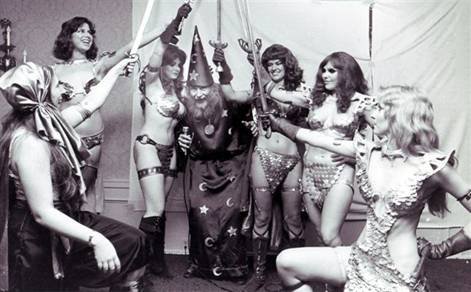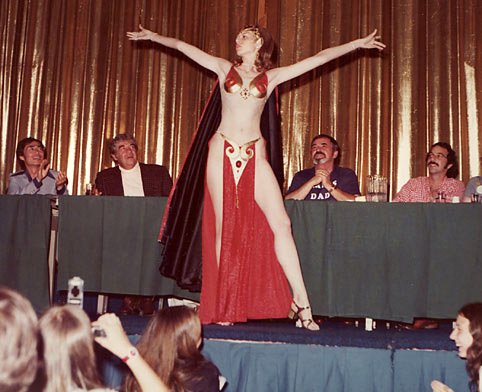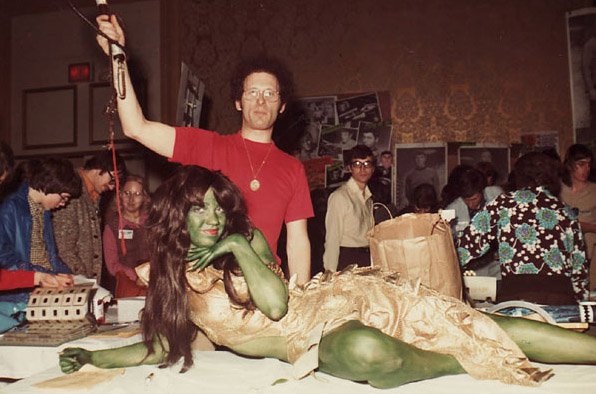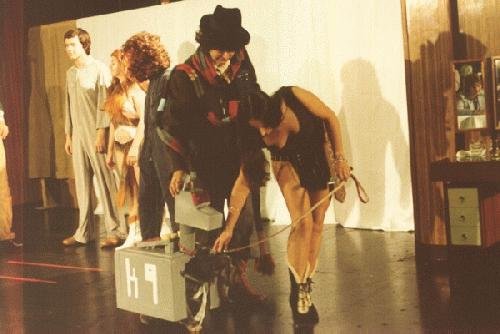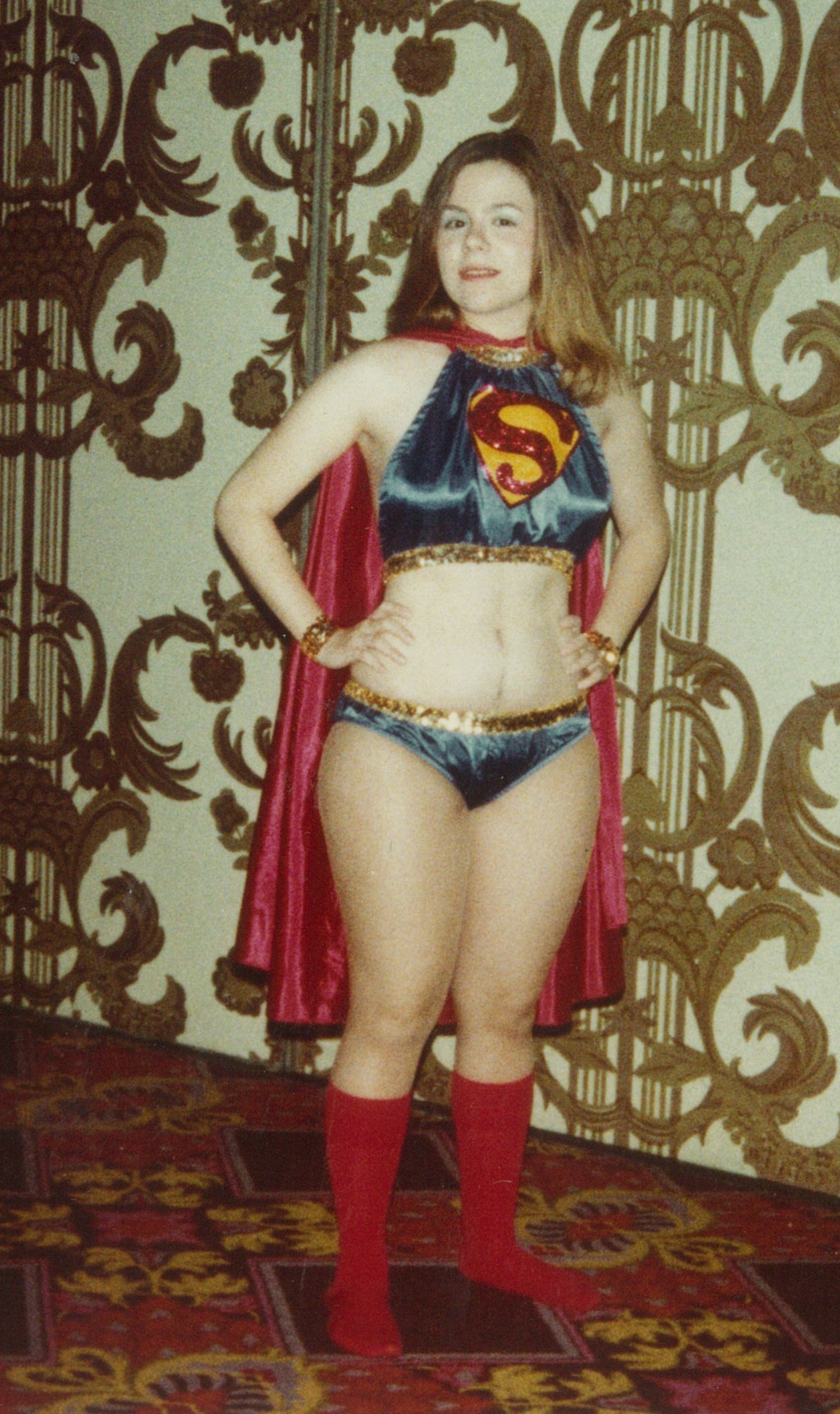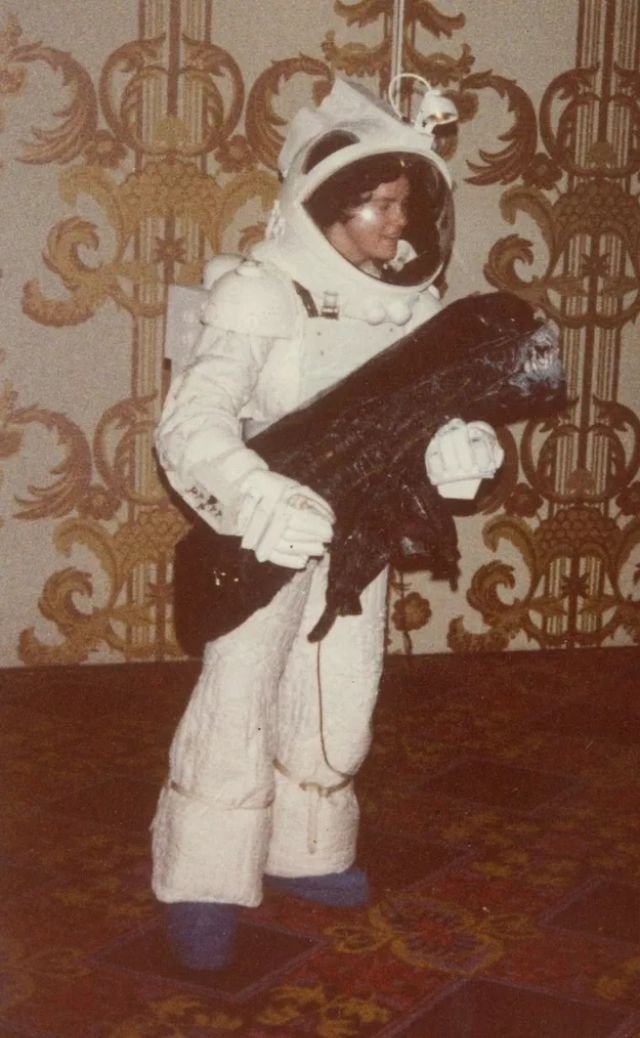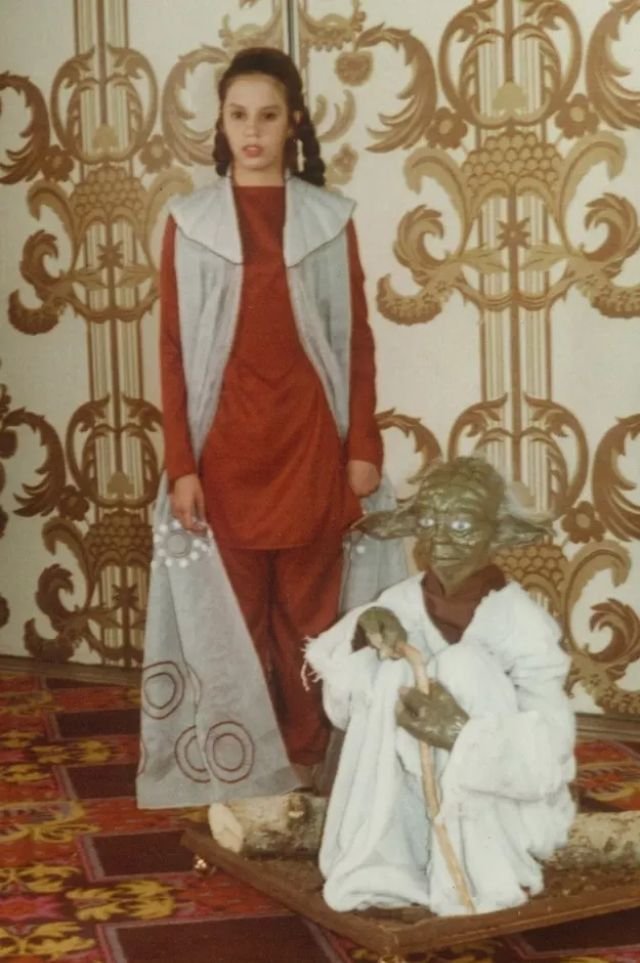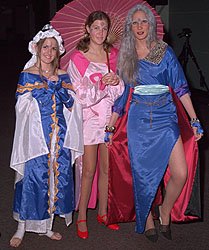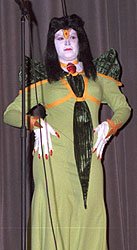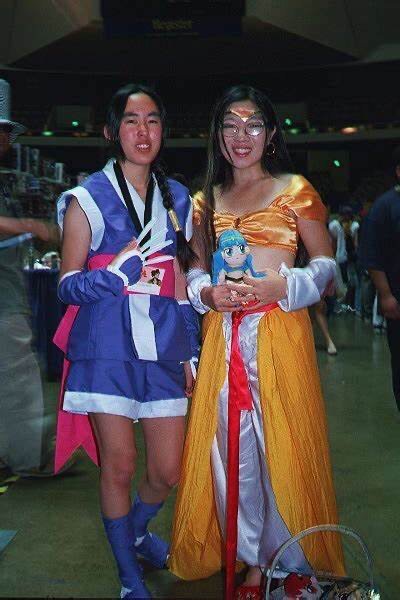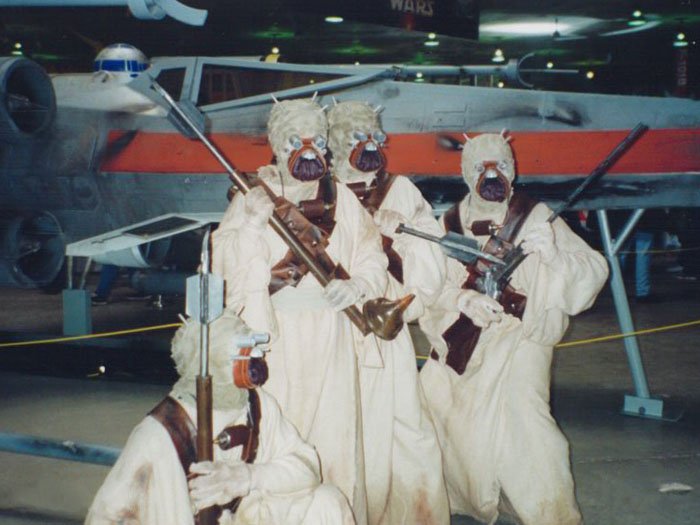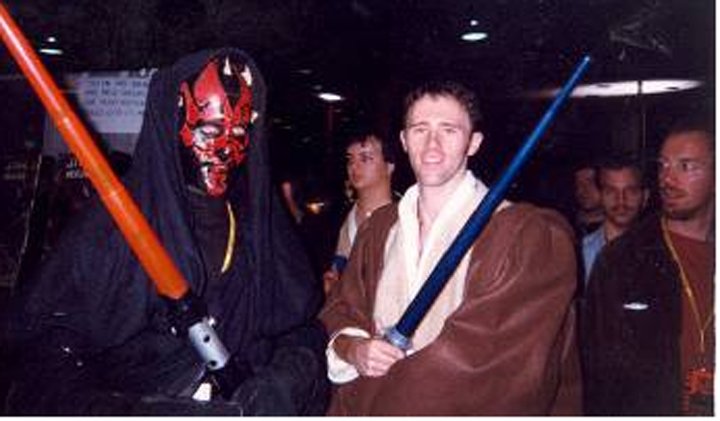Cosplay History: Blending of Cultures
When you think of cosplay, you might picture people dressed up as anime characters - annnnd you'd be partially right. Most think it's a Japanese trend that America adopted. Heck, even I thought so before digging a little deeper. Surprisingly, cosplay didn't start onlyin Japan. It rose in popularity alongside cosplay in the US. The history of cosplay involves the blend of both cultures: anime and sci-fi. Although, the EXACT origins are still debated among cosplayers. It's so intertwined, it's hard to pinpoint each person or event that helped influence the trend. Especially once social media became a thing - buuuut let's try our best!
COSPLAY HISTORY OF JAPAN
People have been dressing up as characters since the 70s. Mainly as their favorite characters from comics known as manga. For example, girls' manga called shojo, were a type of fashion magazine that also told stories. They had full-body fashion illustrations for the characters. Shojo artists designed their own lines of clothing, stationery, and accessories. This made it super easy for girls to dress as the characters and create their own narratives. Girls left a prominent mark on anime and manga culture, as well as the beginnings of cosplay.
Examples of Shojo fashion illustrations
The first fan convention in Japan was Comiket, held December 21, 1975. A dōjin circle (group of artists) created the event. Including Yoshihiro Yonezawa, Teruo Harada, and Jun Aniwa. The most popular content there was doujinshi, which are non-commercial, self-published manga. They're often based on anime, video games, and other media. Kinda like fanart and fanfiction comics. Cons in Japan were more like a huge Artists' Alley compared to the spectacle at US cons. The first Comiket only had about 700 attendees at Nissho Hall. After that, it only continued to rise. The event now averages 500,000-750,000 people per convention. As expected, they attract a TON of cosplayers. Tokyo Big Sight has hosted the event twice a year since 1996. The 90s brought even more cosplay as manga turned into animated cartoons, anime. Shows like Sailor Moon, Dragon Ball, and Neon Genesis became widely popular and are still cosplayed today.
Despite cosplay being a growing trend in Japan it wasn't as accepted as it was in the US. Certain areas didn't welcome cosplayers outside conventions. Some cons even asked cosplayers not to wear their costumes beyond the convention. They were seen as individualists in a culture that focused more on the community as a whole.
But now cosplay is a professional job! Franchises are using cosplay models to promote games, anime, and manga. Including food, beverages, and fashion stores. Like how influencers get paid to promote certain products. Cosplay merged with advertising to attract younger audiences. There are even cosplay themed restaurants...?! Like what?
Alodia @alodia
Enako @enakorin
Sakimi @saki_miyamoto
Ok, nowww let's move on to the US..
COSPLAY GROWING IN THE U.S.
Now there WERE a handful of people dressing up at science fiction conventions as early as 1939. Forrest J. Ackerman attended the first World Science Fiction Convention in New York. He wore a futuristic-looking costume with the help of his girlfriend, Myrtle R. Douglas. There were a few sci-fi costumes over the decades, but "true" cosplay didn't start to pick up until later...
Cosplay owes a big thanks to Star Trek fans who started dressing up at sci-fi conventions. They cosplayed as the Enterprise crew and aliens from the show. This encouraged others to start branching out to other titles. Comic book superheroes started to mix within the science fiction theme. Star Wars and Doctor Who characters soon followed. Star Trek fans held their first "official" convention January 23, 1972.
1970s
The 70s had a larger boom in cosplay than previous decades. The beginning of San Diego Comic-Con probably helped. (Originally called San Diego’s Golden State Comic-Minicon.) The judging of costumes became a fun event. 'Masquerades' were smaller versions of the cosplay contests we know today. Short skits or runway shows were often part of the judging. As you'd expect, cosplays became more detailed and intricate. With the release of new movies and TV shows, Star Wars and superheroes continued to grow in popularity.
Los Angeles Science Fantasy Society photos from the Westercon convention of 1980
1980s
San Diego's Costume-Con made cosplaying the main attraction in 1983. They openly invited costumes from "anime, comics, video games, fantasy, sci-fi, theatrical/film/TV costumes, millinery, fursuits, and more."
The following year, Nobuyuki Takahashi created the word 'cosplay' after attending LA's WorldCon. Mainly because the word 'masquerade' didn't feel right... It was different than the type of costuming you would see in say, something like Phantom of the Opera. He decided on the Japanese word kosupure, a contraction of kosuchūmu purei - meaning costume play (cosplay) in English. Back in Japan, he published a cosplay article in an issue of My Anime. It took a few years for the word to catch on and be commonly used at conventions.
1990s
Like Japan, the US saw a rise in anime cosplay. Anime like Sailor Moon and Dragon Ball Z aired in the US from the mid-90s through the early 2000s. Small anime conventions began in the late 80s into the 90s, including the San Jose AnimeExpo in 1992. There were about 1,750 attendees - rising to an estimated 100,000 in 2019! There was also a surge in superheroes at this time. A wave of new cartoons came out, such as Batman: The Animated Series, Spider-Man, and X-Men.
Photos from AnimeExpo '94-'99
Star Wars fans finally got theirown event called Star Wars Celebration in 1999. Lucasfilm held the Celebration in Denver, Colorado to promote the upcoming release of Star Wars: The Phantom Menace. Since then, following Star Wars Celebrations would honor milestone anniversaries and celebrate upcoming movies.
Some photos from Star Wars Celebration 1999 (Last photo by Rhonda Brown)
2000s
The Oxford English Dictionary added the word 'cosplay' to its vocabulary in 2008. Being defined as "the practice of dressing up as a character from a movie, book, or video game." Finally, people recognized cosplay as something more than simple costume-wearing. New businesses popped up in response. Now cosplayers had more access to common materials and supplies!
ITS POPULARITY TODAY
Cosplay continued to grow from 2000-2009. Then it took off like a rocket. Movies like Lord of the Rings, Harry Potter, Batman Begins, and Iron Man made 'nerd culture' mainstream. People who never read the books or comics were now introduced to these great characters. Thanks to the internet, fans were able to find each other and connect, creating 'fandoms'. Conventions and cosplays became popular as Nerd Culture blended with Pop Culture.
The sharing of cosplays on social media expanded the community even more. As a result, cosplayers gained thousands to millions of followers, making them famous. (Mostly through Instagram and YouTube.) People are now making a living through their hobby. Ads, sponsors, paid appearances, selling crafting tutorials, being models for others' costume/prop stores... the possibilities are endless.
@jessicanigri
@alysontabbitha
@yayahan
Even though cosplay is a large industry, it's separated from everyday American life. In the "real world," it's considered weird and unprofessional for adults. Cosplay stays within cons unless you spot a cosplayer out in the wild doing photoshoots. Going out to restaurants in costume after a con will either get you compliments or rude stares. Most people still don't know what cosplay is, but it's understood and accepted more as the years go by.
TO WRAP THIS UP...
Cosplay has definitely changed the pop culture landscape. The cosplay community has brought together all types of people around the world! Anyone can be who they want to be and let their creativity shine. It's a place for fans to appreciate each others' work and nerd-out over favorite characters. I believe it's still a positive community, where people help and support each other. Cosplay allows different fandoms to overlap and exist together - where all nerds, dorks, and weirdos hang out. So come join the fun!







